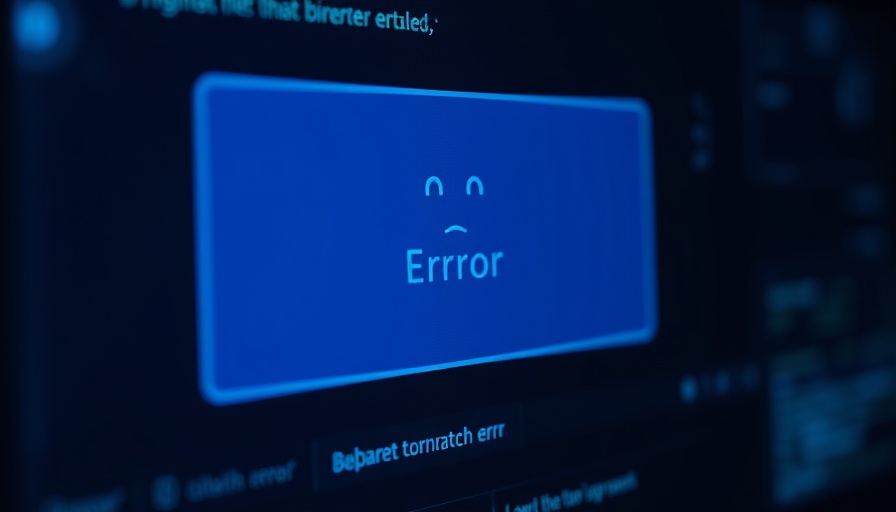
Microsoft's Bold Move: The End of an Icon
In a significant shift underscoring its commitment to resilience and efficiency, Microsoft is retiring the iconic Blue Screen of Death (BSOD) in favor of a sleek black interface. This change is part of the Windows Resiliency Initiative (WRI), a response to past disruptions and a push towards making Windows more robust. As the tech giant bids farewell to a color synonymous with system errors, it simultaneously ushers in a new age defined by streamlined recovery processes that prioritize user experience.
Why Now? The CrowdStrike Outage Catalyst
Marking the BSOD's transition to a black screen represents more than just a design update; it's a necessary evolution following the devastating CrowdStrike incident of 2024. Millions of Windows machines were rendered inoperable during this outage, prompting a reevaluation of existing systems and protocols. The reimagined error screen reflects a strategic imperative—resilience in the face of unavoidable disruptions. The decision to simplify the crash interface aligns with Microsoft’s broader mission to optimize system stability and recovery.
The Windows Resiliency Initiative: More Than Just A Design Change
Underlying the transition from blue to black is a comprehensive restructuring of Windows’ recovery mechanisms. The WRI aims to establish new recovery pathways and automation of responses during critical failures. Enhanced controls for IT administrators will ensure that systems remain operational even when key processes falter.
Quick Machine Recovery: Speed Matters
One standout feature of the WRI is Quick Machine Recovery (QMR), designed for devices that struggle during repeated restarts. Instead of waiting on IT support, QMR empowers Microsoft to deploy fixes automatically, minimizing downtime significantly. Such innovations not only cater to individual users but also to organizations reliant on uninterrupted processes, aligning with the Agile DevOps philosophy of rapid response and adaptability.
Hotpatching and Automation: Keeping Users Productive
Another promising feature, hotpatching, allows for security patches to be applied without rebooting, keeping systems online and users productive. By utilizing background processes, this approach reduces interruptions and enhances the overall user experience. It’s a remarkable shift that embodies the Agile ethos—keeping workflows fluid and responsive.
Impact on IT Management: A Broader Perspective
The automated crash handling mechanisms introduced under the WRI are no longer limited to single devices. By detecting disruption patterns across an organization's fleet of systems, Microsoft can address issues proactively, further reducing the burden on IT teams. By implementing these advanced strategies, Microsoft is not just reacting to challenges; it’s setting new standards for how businesses can use technology to thrive.
Shifting Strategies: The Intersection of Tech and User Experience
The transition away from the BSOD signifies a broader trend in the technological realm—where user experience is becoming paramount. As Agile and DevOps principles permeate the tech landscape, companies like Microsoft are recognizing that resilience isn’t merely a technical requirement; it’s essential for retaining customer trust and satisfaction. By prioritizing user experience, Microsoft is paving the way for a new operational paradigm.
Conclusion: Embracing the Future
The replacement of the Blue Screen of Death with this new black design is not just a cosmetic change; it’s a reflection of Microsoft’s commitment to innovation and resilience. As the company rolls out the WRI, organizations can expect a significant transformation in how they manage and maintain their systems, ensuring that technology becomes a tool for empowerment rather than a source of frustration.
This moment marks not just an end but a new beginning, heralding a future where technology adapts seamlessly to the dynamic needs of its users. As we embrace these changes, it’s crucial for businesses to stay informed and leverage these enhancements to optimize their operations.
 Add Row
Add Row  Add
Add 




Write A Comment